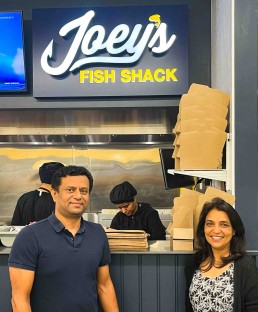Running a restaurant is often perceived as a lucrative business with high profit margins. However, the reality is far more complex. Despite the bustling appearance of many restaurants, the profit margins are often slim, and the majority of revenue goes towards covering a multitude of expenses. Understanding these costs is crucial for both restaurant owners and employees to ensure the business remains viable and successful.
The Misconception of Profit Margins
A common misconception among restaurant employees and the general public is that restaurant owners keep a large portion of sales revenue as profit. When asked how much of each dollar in sales they think the owner retains, many estimate between 30 to 50 cents. In reality, most independent restaurants make a net profit of less than 10 cents per dollar in sales after all expenses are paid.
Major Expense Categories
Labor Costs
The largest expense for most restaurants is labor. This includes the gross wages of all staff, from managers to line cooks and servers. Labor costs typically consume about 30 cents of every sales dollar. Additionally, restaurants must cover federal and state payroll taxes, as well as other employee-related expenses and benefits, adding another 5 to 6 cents to the labor cost.
Food and Beverage Costs
The next significant expense is the cost of food and beverage products, which usually accounts for about 30% of sales. Whether a restaurant serves alcohol or not, the combined cost of ingredients and beverages generally takes up around 30 cents per dollar of revenue.
Operating Expenses
Utilities and Maintenance
Restaurants incur various operating expenses, including utilities such as electricity, gas, and water. Maintenance costs for equipment and facilities are also substantial, ensuring everything from kitchen appliances to HVAC systems are in working order.
Supplies and Products
Operational supplies are another necessary expense. This includes cleaning supplies, paper products, decorations, pest control, silverware, pots and pans, and laundry and linen services. These costs, known as direct operating expenses, are essential for daily operations.
Administrative Costs
Administrative expenses cover a wide range of necessary services and fees. These include legal and accounting services, security, computer software, liability insurance, and transaction fees for credit and debit card payments.
Fixed Costs
Occupancy Costs
Occupancy costs, such as rent, property taxes, and building insurance, typically run around 8 to 9% of sales. These costs are fixed and must be paid regardless of the restaurant’s sales volume.
Depreciation and Interest
Depreciation represents a portion of the cost of the building, furniture, and kitchen equipment. Many restaurant owners also have interest expenses from loans taken out to cover startup costs. Both depreciation and interest are ongoing expenses that must be accounted for in the budget.
The Importance of Efficiency
Given the numerous expenses involved in running a restaurant, the profit that remains after covering all costs is often minimal. This is why it is crucial for everyone in the restaurant to be mindful of waste and inefficiency. Minimizing waste, properly rotating products, and accurately managing portion sizes can significantly impact the overall profitability of the restaurant.
Conclusion
Operating a restaurant is a complex and costly endeavor. The apparent revenue from sales can be deceptive, as the majority of it goes towards covering various necessary expenses. By understanding these costs and working efficiently, restaurant staff can help ensure the business remains profitable and continues to provide excellent dining experiences and employment opportunities.
FAQs
- What is the average profit margin for independent restaurants?
Independent restaurants typically have a net profit margin of less than 10% after all expenses are paid.
- Why are labor costs so high in the restaurant industry?
Labor costs are high because they include not only wages but also payroll taxes and employee benefits.
- How can restaurants reduce their operating costs?
Restaurants can reduce operating costs by minimizing waste, accurately managing inventory, and ensuring efficient use of supplies and utilities.
- What are direct operating expenses in a restaurant?
Direct operating expenses include costs for supplies and products used in daily operations, such as cleaning supplies, paper products, and kitchen equipment.
- Why is it important for restaurant staff to understand the costs of running a restaurant?
Understanding the costs helps staff appreciate the importance of efficiency and minimizes waste, contributing to the overall profitability and sustainability of the restaurant.
Streats Harvey Kitchen is Now Open in Kelowna, BC!
16 December 2024
Joey’s Fish Shack Wallaceburg: Opening Soon!
6 November 2024
Opening Soon: Streats Kelowna Kitchen
30 October 2024
New Location Opening Soon: Streats Airdrie Kitchen
30 October 2024
Restaurant Marketing Trends for 2024: Boosting Business
13 August 2024









